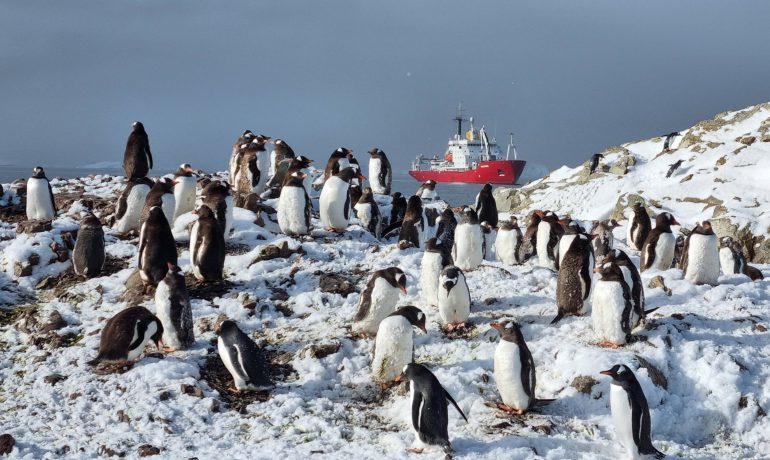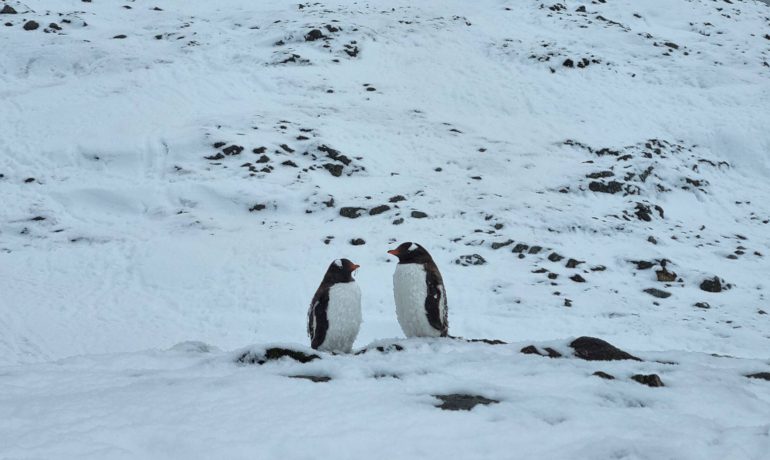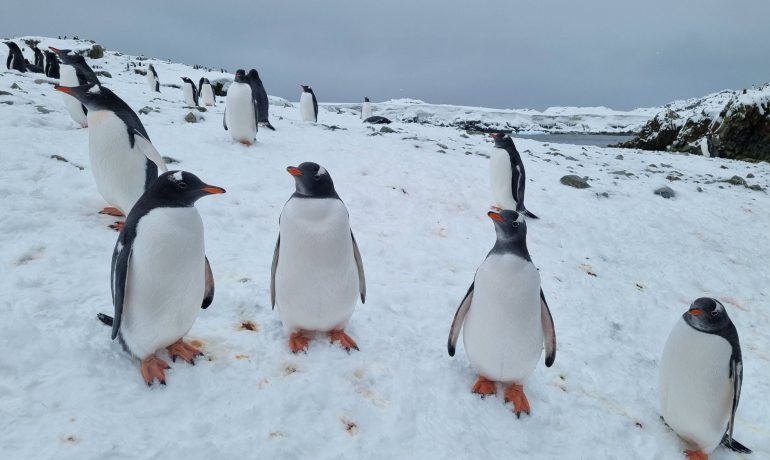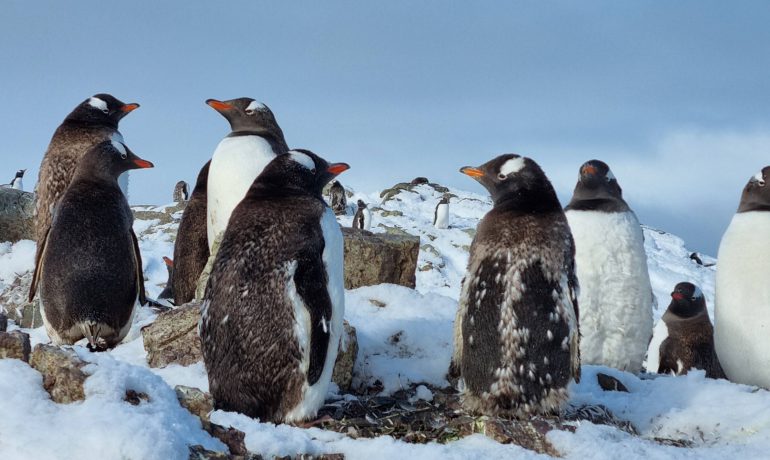This season (September-April), Ukrainian polar explorers counted a record number of subantarctic penguins on Galindez Island, where Vernadsky is located. There are more than 7 thousand of them!
What does this mean?
Warming and a decrease in sea ice area in Antarctica leads to the migration of animals, which capture new territories not previously inhabited by certain species.
For example, until 2007, subantarctic penguins did not nest near Vernadsky at all. Scientists believe that the main reason for this is the late thawing of waters around Galindez island.
Previously, frosts in this area reached -20 C⁰ and below. Due to the presence of ice, penguins could not hunt effectively and chose territories to the north, not covered with ice.
As the area of the western coast of the Antarctic Peninsula warms, subantarctic penguins have rushed south. Their first nests appeared in 2007 at Marina Point near the station.
Already in 2020, the number of subantarctic penguins on the island was 3.5 thousand, and in 2024 it doubled and crossed the mark of 7 thousand.
Given that currently Ukrainian expeditions have 14 participants, that means 500 penguins per polar explorer.
In general, this season Ukrainian biologists counted in our research region:
- 9 colonies of thermophilic subantarctic penguins with a total number of 35 thousand.
- 3 colonies of cold-loving Adélie penguins with a total number of up to 5 thousand
- a little more than 50 Antarctic penguins preferring the transit zone between the Antarctic and sub-Antarctic
Why is it important to study the dynamics of penguin populations?
- This is an obvious sign of climate change in Antarctica
- Penguins actively fertilize the icy continent with their droppings, creating soil for Antarctic vegetation.
- Following the penguins, predators also move towards the Antarctic Circle: leopard seals and skuas.
We remind you that subantarctic penguins come to our island for the mating season in September-October (Antarctic spring). Here they gather in pairs, build nests, lay eggs, hatch and raise chicks.
During the Antarctic winter, penguins leave Vernadsky station area, sailing to where there is clear water.
Information: Vadym Tkachenko, Ivan Parnikoza.
Photo: Serhii Hlotov and Anna Torgonenko.








